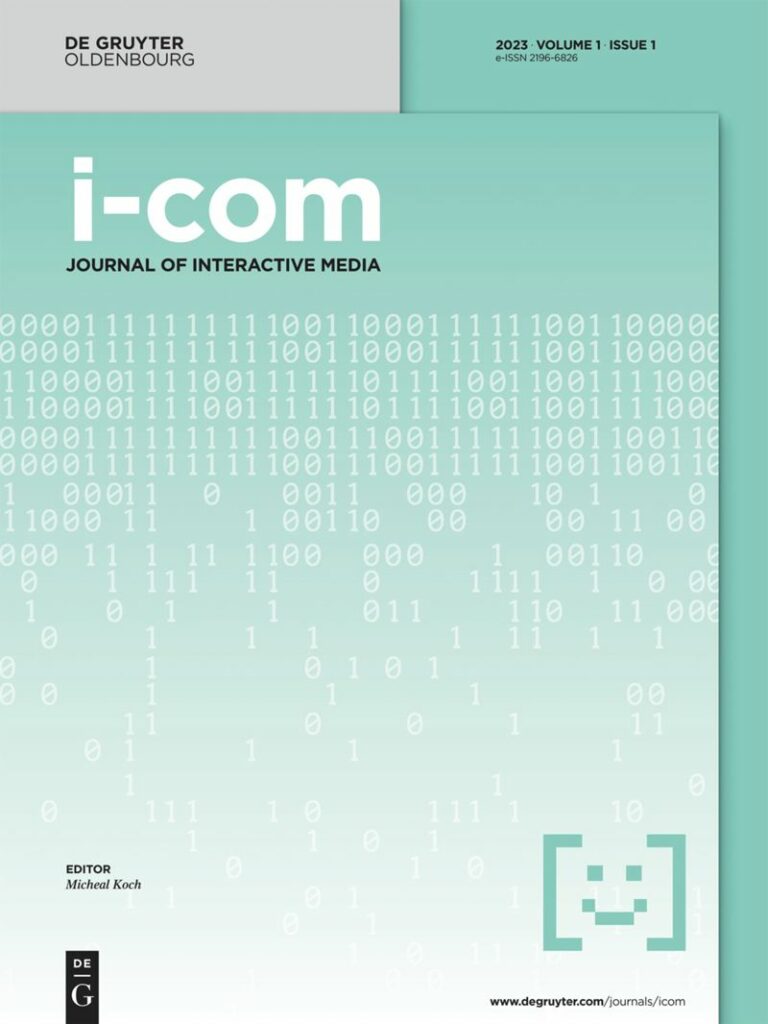https://www.degruyter.com/journal/key/icom/23/2/html
Human-Computer Interaction has a short but lively history and evolution. After the monstrous world of mainframes and text-based terminals came a countermovement in form of various graphics-based personal computer types, which turned the individual citizen into a computer user. For many years, a focus on creative, but also ergonomic solutions can be found. Efficient graphics workstations formed a separate branch of this evolution, which diffused into personal computer platforms through the media and gaming industry. The Internet, especially its mobile variants, then led to a substantial miniaturization of powerful and highly interactive computers, the design of which is again characterized more by creative, but also a chaotic proliferation of technology and functionality instead of well-defined qualities. The fact that computers have not only gained a foothold in all areas of life, but have also become game changers, was hardly foreseeable to the extent that we are experiencing today.
The one zillion dollar question now is how the next upheavals will look like in terms of devices, operating systems and networking; R&D, marketing and ownership; but above all in their design as more or less intelligent interactive systems like followed by current Human-Centered Artificial Intelligence or by embedded systems like in the Internet of Things approaches. Perhaps we may soon have to speak generally about “Human-Technology Communication” than just about the more reduced term “Human-Computer Interaction”, whatever that means to our scientific future.
In this special issue of the i-com journal we present interesting but scientifically explainable and technologically sound forecasts for the next decades to discuss them further in our HCI community. We asked experienced authors who, based on many years of experience and developments in their field of work, to write personal sketches, essays or reviews with a strong part about the future.
The 14 contributions in this issue cover a broad range of topics. You can find discussions about the next decade in Accessibility Research, new views on the Human-Product Relationship or about Interaction-Free Usage. Other authors thought about Human-Centered Crisis Informatics or about better support of Knowledge Workers through Interactive Information Radiators. The contributions illuminate the topic from different scientific perspectives such as computer science, psychology, media design, sociology, education, business administration, labor and organizational science.
Besides vision papers we received a reflection about selected science fiction movies, whether utopian or dystopian, which have always been a sparkling source for ideas and visions for technical or sociological perspectives with many originally strange or unbelievable ideas that meanwhile came true in some way. Another paper dares a very long-term glimpse into the future following the question about the future of Anthropology, the science about the development of human societies and cultures.
Most authors felt the need to include some discussions about the current and future development of artificial intelligence (AI). Some of them even focus on this topic, like for Human-AI Co-Evolution or conclude that the current development of generative and analytic AIs will not lead to a situation, where there is no longer a need for the user to explicitly show the intentions. However, the use of enhanced algorithmic support might make the interaction between users and machines more fluent. It is discussed whether AI is already a game-changer for the future of education as the current discussion about ChatGPT or similar systems is suggesting and what will happen to the educational systems in the long run. As an important issue one contribution comments on the controversial legal frameworks for future AI.
Another stimulating theme in several papers is the question about interweaved layers of real and artificial realities. What happens to our “natural” perception of the world as we use to know it? Will Artificial Reality (AR) develop from task-based use to all-day use, e.g. for knowledge workers. What will change with new developments in Neurotechnology? One paper follows and transposes the ideas of Richard Wagner about the “Total Theatre” including all of the current and foreseeable future interaction devices leading into an “Augmented Total Theatre”.
Following the call, in all of the contributions Human-Computer Interaction plays the central role. This shall lead into discussions, comments or activities that critically revisits, enriches and develops this exciting interdisciplinary scientific field. Some authors limited themselves to look ten years into the future only; others took the risk to look ahead as far as fifty years.
Relax and enjoy reading these courageous visions. Send us your comments, thoughts and follow-up contributions, which we will be happy to publish on the journal’s website or in future issues. We thank all our authors for taking the risk to think outside the box of their labs, methods and data without leaving scientific ground. Maybe they are all wrong or maybe future authors will cite some of the visions as an amazing glimpse into the future in a few decades. Sometimes the best way to look into the future is to remember.
Michael Herczeg and Michael Koch (Guest Editors)

